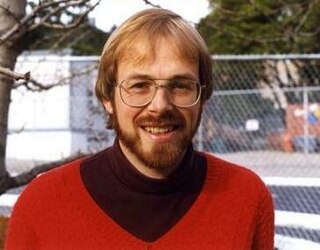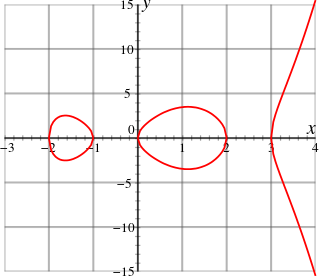In representation theory and algebraic number theory, the Langlands program is a web of far-reaching and consequential conjectures about connections between number theory and geometry. Proposed by Robert Langlands, it seeks to relate Galois groups in algebraic number theory to automorphic forms and representation theory of algebraic groups over local fields and adeles. Widely seen as the single biggest project in modern mathematical research, the Langlands program has been described by Edward Frenkel as "a kind of grand unified theory of mathematics."
The modularity theorem states that elliptic curves over the field of rational numbers are related to modular forms in a particular way. Andrew Wiles and Richard Taylor proved the modularity theorem for semistable elliptic curves, which was enough to imply Fermat's Last Theorem. Later, a series of papers by Wiles's former students Brian Conrad, Fred Diamond and Richard Taylor, culminating in a joint paper with Christophe Breuil, extended Wiles's techniques to prove the full modularity theorem in 2001.

Gorō Shimura was a Japanese mathematician and Michael Henry Strater Professor Emeritus of Mathematics at Princeton University who worked in number theory, automorphic forms, and arithmetic geometry. He was known for developing the theory of complex multiplication of abelian varieties and Shimura varieties, as well as posing the Taniyama–Shimura conjecture which ultimately led to the proof of Fermat's Last Theorem.

Richard Lawrence Taylor is a British mathematician working in the field of number theory. He is currently the Barbara Kimball Browning Professor in Humanities and Sciences at Stanford University.
In mathematics, an Euler system is a collection of compatible elements of Galois cohomology groups indexed by fields. They were introduced by Kolyvagin in his work on Heegner points on modular elliptic curves, which was motivated by his earlier paper Kolyvagin (1988) and the work of Thaine (1988). Euler systems are named after Leonhard Euler because the factors relating different elements of an Euler system resemble the Euler factors of an Euler product.
In abstract algebra, an adelic algebraic group is a semitopological group defined by an algebraic group G over a number field K, and the adele ring A = A(K) of K. It consists of the points of G having values in A; the definition of the appropriate topology is straightforward only in case G is a linear algebraic group. In the case of G being an abelian variety, it presents a technical obstacle, though it is known that the concept is potentially useful in connection with Tamagawa numbers. Adelic algebraic groups are widely used in number theory, particularly for the theory of automorphic representations, and the arithmetic of quadratic forms.

In mathematics, arithmetic geometry is roughly the application of techniques from algebraic geometry to problems in number theory. Arithmetic geometry is centered around Diophantine geometry, the study of rational points of algebraic varieties.
In mathematics, Serre's modularity conjecture, introduced by Jean-Pierre Serre, states that an odd, irreducible, two-dimensional Galois representation over a finite field arises from a modular form. A stronger version of this conjecture specifies the weight and level of the modular form. The conjecture in the level 1 case was proved by Chandrashekhar Khare in 2005, and a proof of the full conjecture was completed jointly by Khare and Jean-Pierre Wintenberger in 2008.
Continuation of the Séminaire Nicolas Bourbaki programme, for the 1960s.
André Néron was a French mathematician at the Université de Poitiers who worked on elliptic curves and abelian varieties. He discovered the Néron minimal model of an elliptic curve or abelian variety, the Néron differential, the Néron–Severi group, the Néron–Ogg–Shafarevich criterion, the local height and Néron–Tate height of rational points on an abelian variety over a discrete valuation ring or Dedekind domain, and classified the possible fibers of an elliptic fibration.
André Haefliger was a Swiss mathematician who worked primarily on topology.
In the mathematical theory of automorphic forms, the fundamental lemma relates orbital integrals on a reductive group over a local field to stable orbital integrals on its endoscopic groups. It was conjectured by Robert Langlands in the course of developing the Langlands program. The fundamental lemma was proved by Gérard Laumon and Ngô Bảo Châu in the case of unitary groups and then by Ngô (2010) for general reductive groups, building on a series of important reductions made by Jean-Loup Waldspurger to the case of Lie algebras. Time magazine placed Ngô's proof on the list of the "Top 10 scientific discoveries of 2009". In 2010, Ngô was awarded the Fields Medal for this proof.

Jean-Marc Fontaine was a French mathematician. He was one of the founders of p-adic Hodge theory. He was a professor at Paris-Sud 11 University from 1988 to his death.

Pierre Colmez is a French mathematician, notable for his work on p-adic analysis.
In mathematics, the André–Oort conjecture is a problem in Diophantine geometry, a branch of number theory, that can be seen as a non-abelian analogue of the Manin–Mumford conjecture, which is now a theorem. The conjecture concerns itself with a characterization of the Zariski closure of sets of special points in Shimura varieties. A special case of the conjecture was stated by Yves André in 1989 and a more general statement was conjectured by Frans Oort in 1995. The modern version is a natural generalization of these two conjectures.
In mathematics, the Néron–Ogg–Shafarevich criterion states that if A is an elliptic curve or abelian variety over a local field K and ℓ is a prime not dividing the characteristic of the residue field of K then A has good reduction if and only if the ℓ-adic Tate module Tℓ of A is unramified. Andrew Ogg introduced the criterion for elliptic curves. Serre and Tate used the results of André Néron to extend it to abelian varieties, and named the criterion after Ogg, Néron and Igor Shafarevich.
In mathematics, the Grothendieck–Ogg–Shafarevich formula describes the Euler characteristic of a complete curve with coefficients in an abelian variety or constructible sheaf, in terms of local data involving the Swan conductor. Andrew Ogg and Igor Shafarevich proved the formula for abelian varieties with tame ramification over curves, and Alexander Grothendieck extended the formula to constructible sheaves over a curve.
Sophie Morel is a French mathematician, specializing in number theory. She is a CNRS directrice de recherches in mathematics at École normale supérieure de Lyon. In 2012 she received one of the ten prizes of the European Mathematical Society.

Günter Harder is a German mathematician, specializing in arithmetic geometry and number theory.
Adrian Ioviță is a Romanian-Canadian mathematician, specializing in arithmetic algebraic geometry and p-adic cohomology theories.






